Learn some of the best tricks to make your purple heart plant bloom and make its pink flowers a center of attraction!
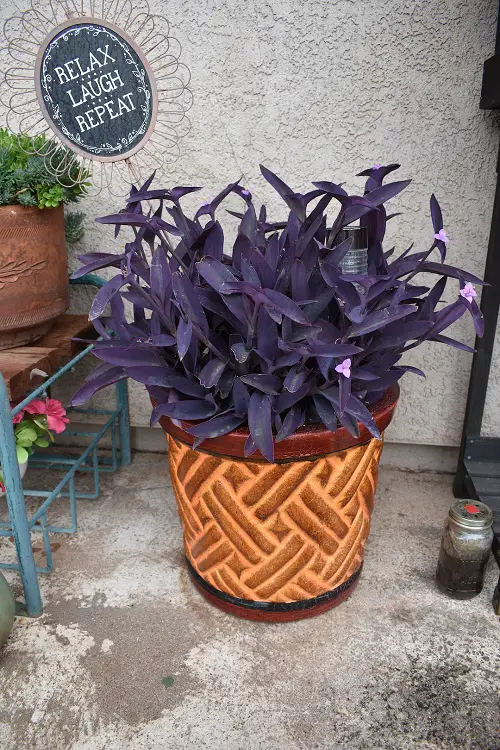
The purple heart plant may be a showstopper with its purple leaves, but getting it to bloom requires a bit more effort. If your plant isn’t flaunting those delicate pink flowers, which usually appear from late spring till fall, the secret lies in a few clever care tricks that are discussed below!
How To Make Your Purple Heart Plant Bloom
1. Give it Enough Light
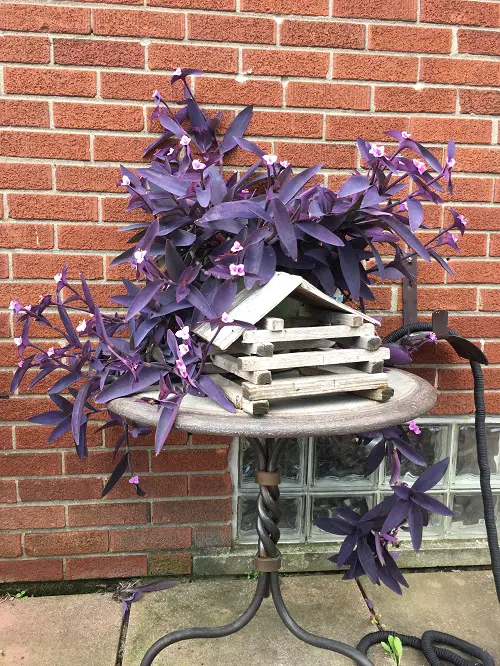
Purple heart isn’t shy and thrives in bright, direct sunlight. If you have been babying it in low light, you are basically saying, No blooms for you!
When you give your purple heart plant direct sunlight, it fuels photosynthesis. This extra energy triggers flowering because the plant interprets the intense light as the ideal condition for reproduction.
In shady spots, it may stay purple and lush, but it won’t give you flowers. So, in order to ensure blooming, move your plant to a sunny windowsill where it gets at least 6 hours of full sun daily.
Pro Tip: A south-facing window is your golden ticket indoors, so set it there for best blooms.
2. Cut Back to Bloom
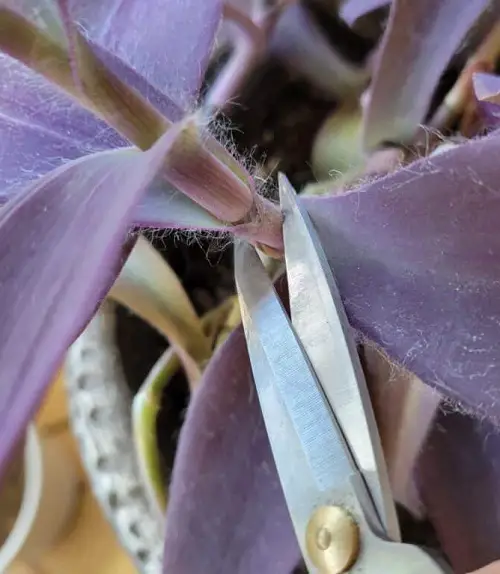
Pruning back is like a wake-up call! When you trim back the leggy stems of your purple heart, it will encourage fresh new growth, and new growth is where its blooms appear. This tactic will redirect the plant’s energy from maintaining tired stems to producing foliage and blossoms.
A simple trim will also promote a bushier structure, which increases the number of tips (where flowers form). While pruning, use clean scissors to cut the stems back by one-third in early spring or late summer.
Also, don’t toss those cuttings! Root them in water, and gift your friends their own future bloomers.
3. Give it a Light Stress
Believe it or not, mild stress can push a purple heart into bloom mode. When a plant thinks survival might be at stake, it kicks into reproduction mode, which, for us, means flowers. Remember that this mild stress doesn’t mean neglect; it means dialing back the water just enough to keep it healthy but a little thirsty.
How do you do it safely? Let the top 2 inches of soil dry out before watering again. You can use a moisture meter or your finger to check the soil’s moisture level, and skip watering until the soil feels dry a couple of inches down. Combine this with bright light, and you will likely see blooms soon.
Pro Tip: Give it a slight temperature drop at night—around 10 F (5.5 C) cooler than daytime temperatures. This gentle shift mimics natural seasonal cues, helping to trigger blooming.
4. Use a Bloom Boosting Fertilizer
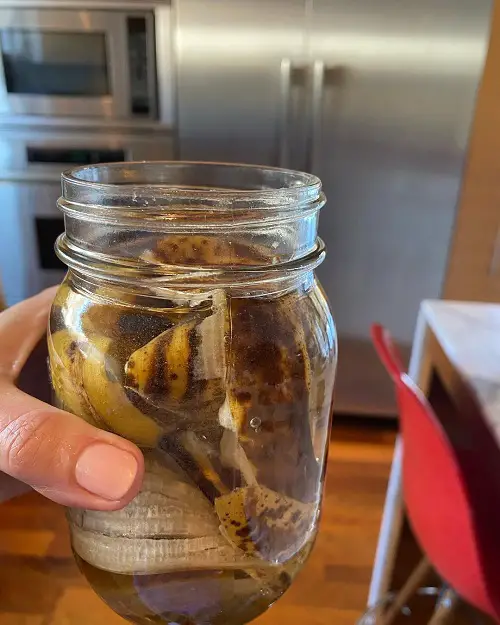
For blooms, your purple heart plant needs a phosphorus-heavy fertilizer, which is the bloom booster in the NPK trio. Phosphorus supports flower production and root development, and without it, the plant will focus on foliage growth, not flowers.
While fertilizing, you should also avoid overfeeding with nitrogen, as it makes the leaves look great at the expense of flowers.
Instead, use a balanced 10-20-10 or 15-30-15 fertilizer diluted to half strength every 3-4 weeks during the growing season. You can also go for these bloom-boosting recipes!
From the time the cutting is planted, it may take 4-5 months for the plant to bloom, so be patient with it.
5. Let It Get a Bit Cramped
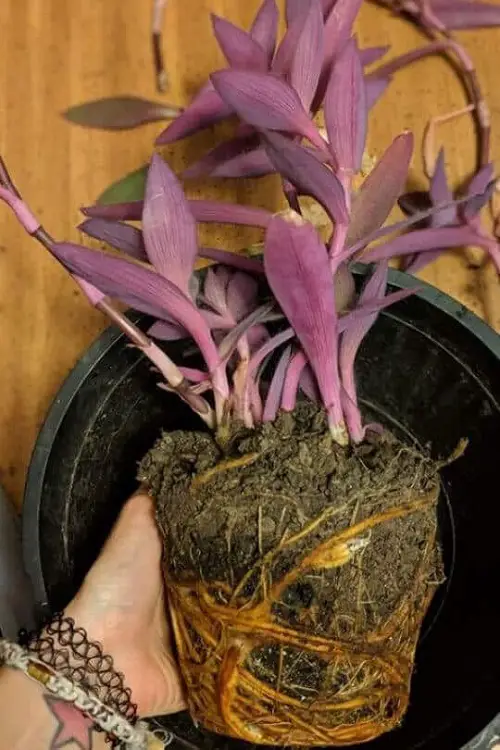
Purple heart loves a tight space, and when you keep it slightly root-bound, it focuses less on growing roots and more on forming flowers. It might sound strange, but this slight stress signals the plant that it’s nearing the end and prompts it to flower as a means of reproduction and survival.
To apply this technique, you should avoid repotting until the plant clearly outgrows the pot, like roots peeking out of the bottom or water running through too fast.
Use a clay or terracotta pot to enhance mild root stress and moisture regulation. Also, never jump pot sizes drastically—go up only one size when you finally repot.
6. Improve the Soil Quality

No one thrives in bad company, and the same applies to plants. If your purple heart is sitting in tired and compacted, or overly acidic soil, it won’t bloom. Period.
Purple heart prefers well-draining soil with neutral to slightly acidic pH (6.0-6.5). Good drainage keeps the roots healthy, and healthy roots fuel blooming.
Give it the perfect blooming mix of potting soil, perlite, coco peat, or coarse sand. You should try repotting in early spring if the mix looks tired or dense. You can also add a pinch of crushed eggshells for calcium, which encourages better nutrient uptake and subtly boosts flowering.
With these simple yet effective care tips, you’re well on your way to enjoying a profusion of those delightful pink blooms against the backdrop of striking purple foliage. Do share how it goes for you in the comments below!



Love reading about how to take care plants .